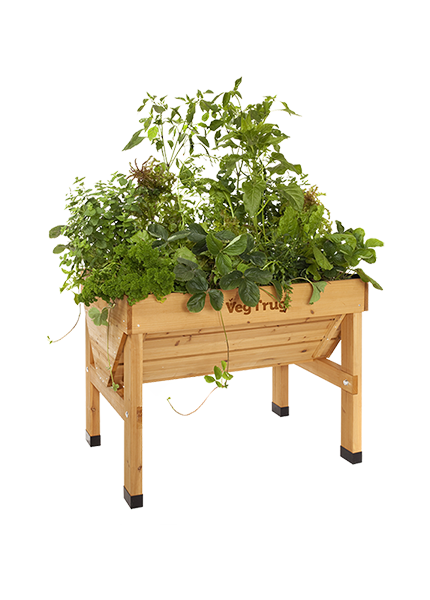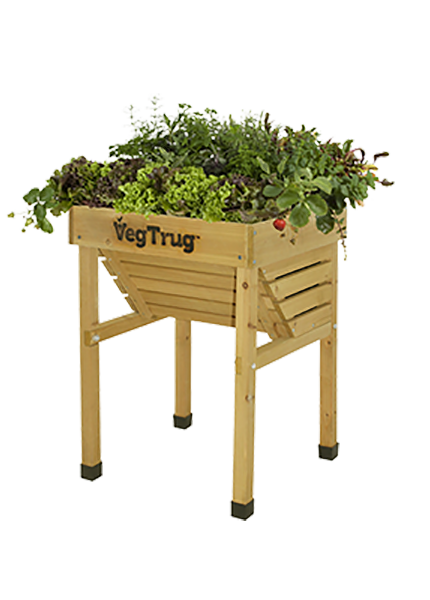Depending on where you get your information, strawberries are one of the most consumed and popular fruits in the world.
And luckily, when it comes to how to grow Strawberries, they are so versatile. With just sun, shelter and fertile, well-drained soil you can enjoy delicious home grown strawberries all season.
Summer-fruiting varieties have the largest fruit. They have a short but heavy cropping period over two or three weeks. There are early, mid and late fruiting cultivars cropping from early to mid-summer.
Perpetual strawberries – sometimes called everbearers – produce small flushes of fruits from early summer to early autumn. The crops are not so heavy as the summer-fruiting ones and the fruits are smaller, with the plants less likely to produce runners. Perpetual strawberries are useful for extending the season.
Read more on how to grow strawberries below.
soils grow in raised beds, which improves drainage and increases rooting depth. Alternatively, try growing in containers, like a VegTrug, or growing-bags.
Strawberries can be bought as potted plants or bare-rooted runners. Strawberries for sale in pots or packs can be planted as soon as you buy them.
Runners look like little pieces of roots with very few leaves. Don’t be alarmed, this is how they should look. You can buy runners from late summer to early spring, and they should be planted in early autumn, or early spring (avoid planting in winter when the ground is wet and cold).
You can also buy cold-stored runners. These can be planted from late spring to early summer and will fruit 60 days after planting.
Prepare your ground by digging in two buckets of well-rotted manure or garden compost per sq m (sq yd). Add a general purpose fertiliser such as Growmore at 100g per sq m (3oz per sq yd).
Avoid areas prone to frost, and soils that have previously grown potatoes, chrysanthemums, or tomatoes because they are all prone to the soil-borne disease verticillium wilt.
Measure out planting holes 35cm (14in) apart. Space rows 75cm (30in) apart. Dig out a hole large enough to accommodate the roots. Trim the roots lightly to 10cm (4in) if necessary, then spread them out in the hole. Ensure that the base of the crown rests lightly on the surface before firming in gently. Planting at the correct depth is important: if the crown is planted too deeply it will rot; if it is planted too shallowly the plants will dry out and die. Water the plants in well.
Once you know how to grow strawberries, you’ll soon have a season of tasty strawberries.
If planting in the autumn or early spring, remove the first flush of flowers of perpetual strawberries, but remove flowers of summer strawberries only if the plants are weak.
If you've planted cold-stored runners in late spring to early summer, leave the flowers on. These will produce strawberries in 60 days, reverting to their natural cropping period the following year.
Water frequently while new plants are becoming established. Also water during dry periods in the growing season. Try to avoid wetting crowns and fruit as this can promote disease.
In early spring, apply general fertiliser such as Grow more at a rate of 50g per sq m (2oz per sq yd). During the growing season, give strawberry plants a liquid potash feed – such as a tomato feed – every 7 to 14 days.
As fruits start to develop, tuck straw or fibre mats underneath plants to keep fruit clean. This will also help suppress weeds. Pull out any weeds that do emerge.
After cropping has finished, cut off old leaves from summer-fruiting strawberries to allow fresh leaves to develop. This isn't necessary with autumn fruiting plants, instead just remove old leaves during the end of season clear up. Also remove the straw mulch, fibre mat, or black polythene, to prevent a build-up of pests and diseases. Take off any netting so birds can feed on any pests.
Expect strawberry plants to crop successfully for four years before replacing them. Rotate your strawberry patch onto fresh ground to minimise the risk of disease build up in the soil.
There are a number of viruses that are strawberry-specific. Known as strawberry virus they attack the plants as one or in combinations. Symptoms include yellow spots, crinkled leaves and stunted growth.
Affected plants should be removed and rotate where you plant, to reduce the chances of disease.
Birds, slugs, aphids and red spider mites all love strawberries too. Netting, or a VegTrug cover, may be required to protect from birds. You can remove aphids by hand if you see them or try a horticultural soap. Or, in both cases, you could try introducing a natural predator.
Strawberries can also suffer cold damage, so protect your bed with fleece if an overnight frost threatens.
Signs of grey mould or powdery mildew can be reduced by keeping good air circulation and removing the affected parts.
Harvest your strawberries to use fresh. Picking at the warmest time of the day means you’ll get the most taste. Strawberries don’t freeze well and don’t last long past their ripest, so if you get too many you might need to try out a few different recipes.
How to grow strawberries is part of the VegTrug Grower’s Guide.

